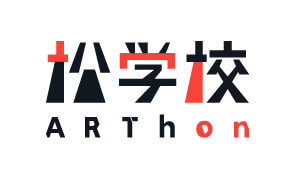







https://www.facebook.com/events/354083558643635/
2018下半年度,數位藝術基金會舉辦「科技藝術典藏基礎計畫(Save Media Art)」三場科技藝術典藏系列講座,以計畫主持人陳禹先、林子荃兩位長期研究與關注經驗,自美術館典藏管理事務的田野經驗中,分享永續典藏科技藝術作品所面臨的問題及介紹國際上較盛行的理論實務。
2019年7月,奠基於前三場講座,邀請三位國際研究人員:Aneet Dekker、Jonathan Farbowitz、Emma Dickson,與陳禹先、林子荃進行兼具理論與實務角度的跨國對談,以網路藝術研究者、時基藝術修復師的眼界,與台灣觀眾分享他們行走於網路藝術保存與維護一途上的經驗。
歡迎您使用ARThon影音平台服務並申請加入會員的行列,為保障您的權益,請於註冊成為「會員」之前,詳細閱覽以下內容。當您選擇開始登錄成為會員時,即視為 您已事先閱讀本同意書之全部內容,並同意我們的「使用條款」與「隱私權政策」。
※ARThon 使用條款協議(以下簡稱「本協議」),是 ARThon(以下簡稱「ARThon」、「本服務」和「本公司」)與 ARThon 的一般使用者(指未註冊成為會員之使用者,以下簡稱「使用者」、「您」或「您的」)及註冊會員(以下簡稱「會員」、「您」或「您的」)的共同協議。ARThon 是由 數位藝術中心.tw 所營運的服務,您使用或訪問 ARThon 網站或任何 ARThon 產品、軟體、資料源,以及所有通過 ARThon 網站向您提供的服務時,即視為您已知悉、並完全同意本協議的所有約定,並同意受其及相關法律之約束。
※您應當定期查閱本協議之最新版本。ARThon 可自行決定隨時修改或更正本協議及相關服務條款和政策,且您同意接受上述修改或更正的約束。
※如您是未滿十八歲之未成年人,則您必須在使用本服務前,將本協議及其後之修改變更請您的父母或監護人閱讀,並得到其同意,才可以註冊或使用本服務。當您使用本服務時,則視為您的父母或監護人已經閱讀、了解並同意本協議之內容及其後之修改變更。
※如果您不同意本協議的任何部分,請停止使用本服務。
ARThon 所提供的平台、聊天區以及其他公開發表服務的互動空間,均允許使用者主動傳播訊息或發表自己的觀點、言論,這些內容並不代表 ARThon 的立場,應由發表者本人自負其責。本公司對於使用者之言論不負責任,亦不擔保使用者署名之真實性。會員及未註冊之使用者須注意遵守相關法律,不得有毀謗、散布不實言論、散布猥褻資訊、侵害他人智慧財產權、隱私權、不符合網路禮儀或令一般人不舒服之言論或資訊,或其他違反法律之行為,亦不得有冒用他人名義、身分等行為。經檢舉查知言論符合上述事項者,本公司可逕自刪除相關言論及影音內容。必要時,本公司得依法令及主管機關之要求,提供本服務之會員及未註冊之使用者相關資訊,且無須另行通知。
您同意於 ARThon 透過 YouTube 平台傳佈之影音內容預設為公開予所有第三人觀看與分享。ARThon 服務存取與使用影片之方式請參照 YouTube 之服務條款。https://www.youtube.com/t/terms
您一旦提供您的影片、圖像、文字及聲音等內容予 ARThon,您即依本條款授予 ARThon 下列全球性、免權利金、非專屬、可轉授權且可轉讓之權利及使用權:
就您所提供予 ARThon 之內容及您於本平台中播放或公開之所有內容,您同意並承諾如下:
會員及未註冊之使用者不得直接或間接利用本公司服務,從事下列行為:
會員及未註冊使用者違反本協議或本公司其他服務條款時,本公司得視情節之輕重,為暫時或永久停權之處分,或為其他適當處置。除另有規定者外,本公司於下列情形得採取永久停權方式處理:
本公司於下述情形,得經事前或事後公告,暫停相關服務:
您同意本公司服務得依本公司單方決定變更服務內容之全部或一部分,若涉及會員權益重大時,本公司應於一個月前公告或通知會員資料所載之電子郵件信箱或手機號碼。您若不同意服務之變更時,應於公告或收到通知後,並停止使用本公司相關服務。
尊重您個人隱私是 ARThon 的基本政策。所以,ARThon 一定不會在未經您合法授權時公開、編輯或透露您的資料,除非有法律許可要求或在誠信的基礎上認為透露這些信息是必要的,包括但不限於以下幾種情形:
本服務所提供之影片、文字、聲音、圖形、電腦程式、商標等,其智慧財產權均屬於本公司或其授權人所有,非經本公司合法授權之利用行為,均屬智慧財產權之侵害。您只能在 ARThon 和所有權人授權下才能使用這些內容,而不能擅自複製、再造這些內容、或創造與內容有關的衍生產品。尊重智慧財產權是您應盡的義務,如有違反,您應對 ARThon 負損害賠償責任(包括但不限於訴訟費用及律師費用等)。
您明確了解本公司對於本公司所提供之服務,除本協議或其他個別條款另有規定者外,對本公司各服務並不提供任何明示或默示的擔保,包含但不限於商業適用性、特定目的之適用性及未侵害他人權利。
ARThon 可隨時根據實際情況中斷本服務之全部或一部分服務。不需對任何個人或第三方負責而得隨時中斷服務。用戶對本協議後續之增修有異議,或對 ARThon 的服務不滿,可以行使如下權利:
您已同意,使用本服務由您自行承擔風險。在法律允許的最大限度內,ARThon 及其管理人員、董事、員工和代理人全部免予承擔所有明示或默示的關於服務和您使用服務的保證。在法律允許的最大限度內,ARThon 免予承擔所有有關本網站或與其連結的網站內容的準確性或完整性的保證、條件、條款和陳述,並且不承擔下列責任:
本協議所定之全部或一部份被司法機關確認為無效時,並不影響其他條款之效力,於本公司修改該無效之條款前,應依民法、消費者保護法及其他相關法律規定處理。
ARThon有權修改本使用條款協議,ARThon使用條款協議一旦發生變動,會在重要頁面上提示修改內容。ARThon 保留修改本協議而不需通知會員的權利。如果不同意所改動的內容,請勿繼續使用本公司服務。如果會員繼續使用 ARThon 的服務,則視為接受使用條款協議的變動。ARThon 行使修改或中斷服務的權利,不需對會員或第三方負責。
如果您對我們的隱私權保護聲明有任何問題,請與客服中心連絡。
本服務保留隨時修改本隱私權保護聲明的權利。修改後的條款將公佈於本服務網站上之相關網頁,並自公佈之日起生效,不另行通知。
ARThon服務(以下簡稱「ARThon」、「本服務」和「本公司」)非常重視ARThon的會員(以下簡稱「會員」、「您」或「您的」)的線上個人隱私。為了讓您瞭解我們將如何蒐集、應用及保護您所提供的個人資訊,請詳閱下列隱私權保護聲明。
如果您對我們的隱私權保護聲明有任何問題,請與客服中心連絡。
本服務保留隨時修改本隱私權保護聲明的權利。修改後的條款將公佈於本服務網站上之相關網頁,並自公佈之日起生效,不另行通知。
※ARThon 使用條款協議(以下簡稱「本協議」),是 ARThon(以下簡稱「ARThon」、「本服務」和「本公司」)與 ARThon 的一般使用者(指未註冊成為會員之使用者,以下簡稱「使用者」、「您」或「您的」)及註冊會員(以下簡稱「會員」、「您」或「您的」)的共同協議。ARThon 是由 數位藝術中心.tw 所營運的服務,您使用或訪問 ARThon 網站或任何 ARThon 產品、軟體、資料源,以及所有通過 ARThon 網站向您提供的服務時,即視為您已知悉、並完全同意本協議的所有約定,並同意受其及相關法律之約束。
※您應當定期查閱本協議之最新版本。ARThon 可自行決定隨時修改或更正本協議及相關服務條款和政策,且您同意接受上述修改或更正的約束。
※如您是未滿十八歲之未成年人,則您必須在使用本服務前,將本協議及其後之修改變更請您的父母或監護人閱讀,並得到其同意,才可以註冊或使用本服務。當您使用本服務時,則視為您的父母或監護人已經閱讀、了解並同意本協議之內容及其後之修改變更。
※如果您不同意本協議的任何部分,請停止使用本服務。
ARThon 所提供的平台、聊天區以及其他公開發表服務的互動空間,均允許使用者主動傳播訊息或發表自己的觀點、言論,這些內容並不代表 ARThon 的立場,應由發表者本人自負其責。本公司對於使用者之言論不負責任,亦不擔保使用者署名之真實性。會員及未註冊之使用者須注意遵守相關法律,不得有毀謗、散布不實言論、散布猥褻資訊、侵害他人智慧財產權、隱私權、不符合網路禮儀或令一般人不舒服之言論或資訊,或其他違反法律之行為,亦不得有冒用他人名義、身分等行為。經檢舉查知言論符合上述事項者,本公司可逕自刪除相關言論及影音內容。必要時,本公司得依法令及主管機關之要求,提供本服務之會員及未註冊之使用者相關資訊,且無須另行通知。
您同意於 ARThon 透過 YouTube 平台傳佈之影音內容預設為公開予所有第三人觀看與分享。ARThon 服務存取與使用影片之方式請參照 YouTube 之服務條款。https://www.youtube.com/t/terms
您一旦提供您的影片、圖像、文字及聲音等內容予 ARThon,您即依本條款授予 ARThon 下列全球性、免權利金、非專屬、可轉授權且可轉讓之權利及使用權:
就您所提供予 ARThon 之內容及您於本平台中播放或公開之所有內容,您同意並承諾如下:
會員及未註冊之使用者不得直接或間接利用本公司服務,從事下列行為:
會員及未註冊使用者違反本協議或本公司其他服務條款時,本公司得視情節之輕重,為暫時或永久停權之處分,或為其他適當處置。除另有規定者外,本公司於下列情形得採取永久停權方式處理:
本公司於下述情形,得經事前或事後公告,暫停相關服務:
您同意本公司服務得依本公司單方決定變更服務內容之全部或一部分,若涉及會員權益重大時,本公司應於一個月前公告或通知會員資料所載之電子郵件信箱或手機號碼。您若不同意服務之變更時,應於公告或收到通知後,並停止使用本公司相關服務。
尊重您個人隱私是 ARThon 的基本政策。所以,ARThon 一定不會在未經您合法授權時公開、編輯或透露您的資料,除非有法律許可要求或在誠信的基礎上認為透露這些信息是必要的,包括但不限於以下幾種情形:
本服務所提供之影片、文字、聲音、圖形、電腦程式、商標等,其智慧財產權均屬於本公司或其授權人所有,非經本公司合法授權之利用行為,均屬智慧財產權之侵害。您只能在 ARThon 和所有權人授權下才能使用這些內容,而不能擅自複製、再造這些內容、或創造與內容有關的衍生產品。尊重智慧財產權是您應盡的義務,如有違反,您應對 ARThon 負損害賠償責任(包括但不限於訴訟費用及律師費用等)。
您明確了解本公司對於本公司所提供之服務,除本協議或其他個別條款另有規定者外,對本公司各服務並不提供任何明示或默示的擔保,包含但不限於商業適用性、特定目的之適用性及未侵害他人權利。
ARThon 可隨時根據實際情況中斷本服務之全部或一部分服務。不需對任何個人或第三方負責而得隨時中斷服務。用戶對本協議後續之增修有異議,或對 ARThon 的服務不滿,可以行使如下權利:
您已同意,使用本服務由您自行承擔風險。在法律允許的最大限度內,ARThon 及其管理人員、董事、員工和代理人全部免予承擔所有明示或默示的關於服務和您使用服務的保證。在法律允許的最大限度內,ARThon 免予承擔所有有關本網站或與其連結的網站內容的準確性或完整性的保證、條件、條款和陳述,並且不承擔下列責任:
本協議所定之全部或一部份被司法機關確認為無效時,並不影響其他條款之效力,於本公司修改該無效之條款前,應依民法、消費者保護法及其他相關法律規定處理。
ARThon有權修改本使用條款協議,ARThon使用條款協議一旦發生變動,會在重要頁面上提示修改內容。ARThon 保留修改本協議而不需通知會員的權利。如果不同意所改動的內容,請勿繼續使用本公司服務。如果會員繼續使用 ARThon 的服務,則視為接受使用條款協議的變動。ARThon 行使修改或中斷服務的權利,不需對會員或第三方負責。